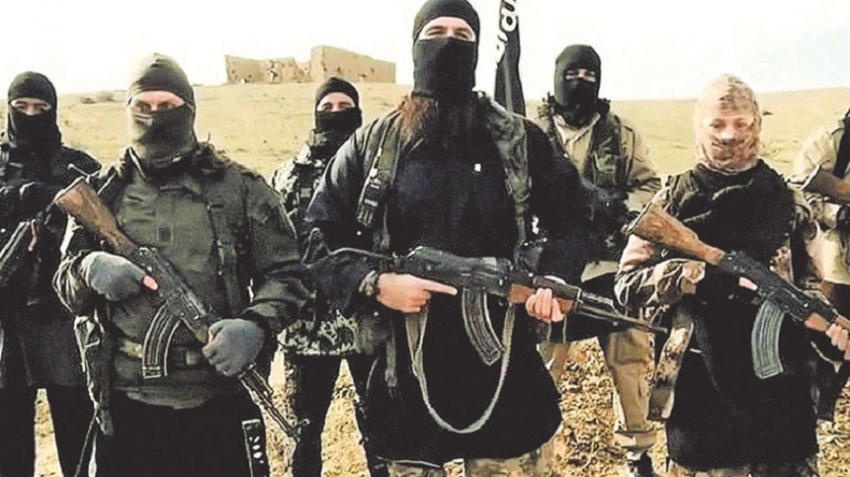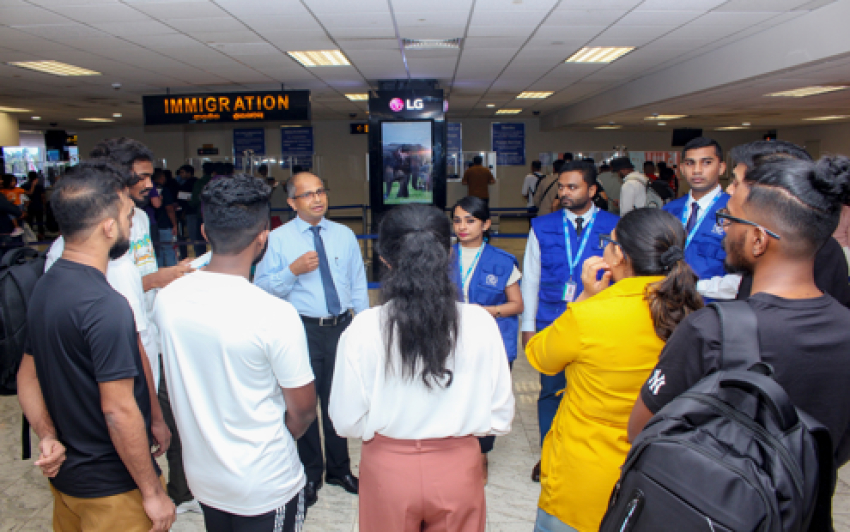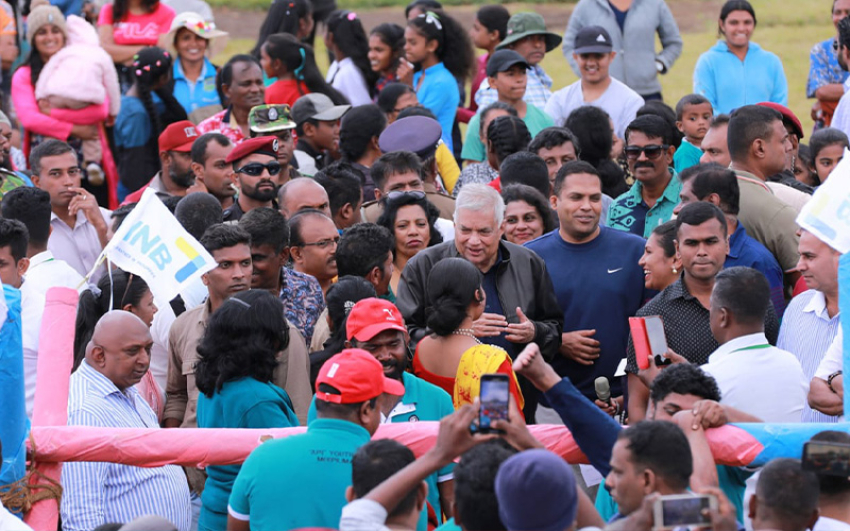The Middle East was where the ancient urban civilizations developed, making the region a crossroads of Europe, Africa, and Asia for many centuries. As such, the region has been a bridge for people, trade, and ideas as well as numerous progressive developments and destructive conflicts. That same quality of the Middle East is also at the heart of making the region home to world’s three major religions.
On the basis of the Sykes-Picot map of 1916, the Middle East and North Africa (MENA) was chopped into several small states with artificial phony borders and geographies and cultures. These new states isolated families, divided ethnic groups, religious sects and redrew the map of natural resources such as important waterways. The invented borders had no historical basis or even geographic logic. Its only logic was political.
It took WWII to make the region unmanageable for the colonialists in the face of the Arab reassertion and liberation movements. As Europeans began to gradually withdraw from the region, the U.S. and the former USSR began to fill the vacuum. The post-war Middle East then became embroiled in the Cold War between the two emergent superpowers of the capitalist and socialist camps.
Oil also led to large military and luxury purchases, uneven urbanization and environmental wastes, and growing dictatorship and corruption of the dependent and largely weak states. Meanwhile, the Arab Israel conflict exacerbated external interventions and local distresses caused by war destructions and human displacements.
Specifically, Arabs and Islam were viewed by many as “exotic, backward, uncivilized, and at times dangerous.” This racism and stereotyping went so far as to claim that there was a given “Arab Mind” that is set on rejectionism, fundamentalism, and terrorism. This cultural demonization complemented the economic and political humiliation.
Worse yet, Arabs and Muslims were also humiliated by their own corrupt, inept, or ignorant rulers—dictators and populists alike. The Middle Eastern rulers also destroyed the nationalist, reformist, and socialist oppositions. However, they did not succeed in eliminating their Islamic opponents. It is no wonder that when cracks began developing in the dictatorships beginning in the late 1970s, only Islamists could quickly emerge and assume leadership. From Afghanistan to Iran, Turkey, and the Arab World, these Islamic forces became radicalized and mobilized (Jihadist), setting the stage for the third wave of regional geopolitics.
The Islamic Refuge
Radicalization of the Islamists was quite uneven across the Muslim geographies. They could only take refuge in Islamic culture to counter their humiliation. This search for glory in early Islam led to their extremism or reactive politics. Indeed, the Islamist and terrorist groups in the Middle East and beyond are the product of this sense of humiliation as well as the belief that Islam is the remedy against illegitimate “sovereign” dictators. It is no wonder that the so-called Jihadists like ISIS have primarily targeted the local authorities and Western powers, the perpetrators of their humiliation, and seek a borderless Islamic state.
This identity politics should not make one view the struggle by ISIS as Islamic but rather as political, aimed at reversing demonizing humiliation and regaining the dreamed past. The West often judges Islam only by manifestations of extremism; in truth, extremism is perpetrated by a minority of Muslims in historically Muslim lands and beyond. There are also various schools of thought, orientations, and sects in Islam, each holding differing views of what the religion teaches or demands in practice.
Terrorism is not exclusive to Muslims, Islam, or Islamist ideologies. It has existed throughout history amongst all religions and in all regions.
Rise of ISIS
Sageman, 61-year-old, Polish-born psychiatrist and academic is a former CIA operations officer who was based in Pakistan in the late 1980s. There he worked closely with the Afghan mujahedin and written a famous book, Understanding Terror Networks and Leaderless Jihad, closely analysed the biographies of several hundred terrorists.
Sageman, the former CIA officer, says we have to locate terrorism and extremism in local conflicts rather than in grand or sweeping ideological narratives – the grievances and the anger come first, he argues, followed by the convenient and self-serving ideological justifications. For example, he says, the origins of Isis as a terror group lie not in this or that Islamic book or school of thought, but in the “slaughter of Sunnis in Iraq”.
He reminds how, in April 2013, when there was a peaceful Sunni demonstration asking the Shia-led Maliki government in Baghdad to reapportion to the various provinces what the government was getting in oil revenues, Iraqi security forces shot into the crowds. “That was the start of this [current] insurrection.” Before that, it was the brutal, US-led occupation, under which Iraq became ground zero for suicide bombers from across the region and spurred the creation of new terrorist organisations, such as al-Qaeda in Iraq (AQI).
ISIS is the “remnant” of AQI, Sageman adds. He believes that any analysis of the group and of the ongoing violence and chaos in Iraq that doesn’t take into account the long period of war, torture, occupation and sectarian cleansing is inadequate – and a convenient way of exonerating the west of any responsibility. “Without the invasion of Iraq, [Isis] would not exist. We created it by our presence there.”
Isis manual
The manual that underpins Islamic State is a 579-page text, written by the ISIS ideologue Abu Abdullah al-Muhajir. The text attempts to legitimise the acts of the Jihadist group, including the mutilation of corpses, the trade in human organs, beheading, the killing of children along with “scorched earth operations” and global terrorist attacks. Known as the Fiqh al-Dima (or The Jurisprudence of Blood), the book is the key Salafi-Jihadist text. It attempts to justify the use of weapons of mass destruction, perpetrating genocide, the murder of non-combatants, the taking of sex slaves and hostages. The titles of the text’s 20 chapters include “Beheading, decapitation and mutilation”, “Kidnapping warring infidels” and “How to kill spies”.
The Way Forward
ISIS is a unique Islamic political force with a political goal centred on recreating an imagined glorious Islamic past that would supposedly dispel the demonizing humiliation that Muslims have suffered at the hands of the foreign powers and local dictators. As long as its root cause remains, new kinds of ISIS movements will rise up from its ashes. These are cause-centred movements, rather than symptom centred ones.
The course of these disastrous developments can and must change. To begin with, the causes of this catastrophe must be fully understood and appreciated. Ideologies, religion in particular, have also played a harmful role as they have promoted obliviousness and intolerance.
The pre-requisites for moving in this direction are regional and international cooperation on the basis of full recognition of concerns and interests.
Myths
Some selected myths to demystify
* The attacks are a continuation of Sri Lanka’s civil war. Yes, the victims and the likely perpetrators were mostly local. But the audience for, and ambitions of, this assault were almost certainly global.
* Another myth links this attack to supposed longstanding religious enmity in Sri Lanka. The country’s civil war was fought between members of different communities – but on ethnic and political grounds, not religious ones.
* A third myth is that this sort of attack couldn’t happen elsewhere. It could – and the fact that it appears to have been directed by ISIS shows that this group is very much a threat throughout the world.
* Perhaps the most dangerous misconception is that these attacks were retaliation for the mass shooting of worshippers at mosques in Christchurch, New Zealand. The Easter attacks were far too complex and sophisticated to have been put together in the five weeks between March 15 and April 21. The attackers in Sri Lanka and New Zealand did share a common goal, however – to drive a wedge between Muslims and Christians worldwide, and fuel a cycle of violence between the communities across the globe.
Cause of ISIS: Geopolitics of the Middle East
Monday, May 6, 2019 - 01:00
Print Edition
Features
Jeevan Thiagarajah
The Middle East was where the ancient urban civilizations developed, making the region a crossroads of Europe, Africa, and Asia for many centuries. As such, the region has been a bridge for people, trade, and ideas as well as numerous progressive developments and destructive conflicts. That same quality of the Middle East is also at the heart of making the region home to world’s three major religions.
On the basis of the Sykes-Picot map of 1916, the Middle East and North Africa (MENA) was chopped into several small states with artificial phony borders and geographies and cultures. These new states isolated families, divided ethnic groups, religious sects and redrew the map of natural resources such as important waterways. The invented borders had no historical basis or even geographic logic. Its only logic was political.
It took WWII to make the region unmanageable for the colonialists in the face of the Arab reassertion and liberation movements. As Europeans began to gradually withdraw from the region, the U.S. and the former USSR began to fill the vacuum. The post-war Middle East then became embroiled in the Cold War between the two emergent superpowers of the capitalist and socialist camps.
Oil also led to large military and luxury purchases, uneven urbanization and environmental wastes, and growing dictatorship and corruption of the dependent and largely weak states. Meanwhile, the Arab Israel conflict exacerbated external interventions and local distresses caused by war destructions and human displacements.
Specifically, Arabs and Islam were viewed by many as “exotic, backward, uncivilized, and at times dangerous.” This racism and stereotyping went so far as to claim that there was a given “Arab Mind” that is set on rejectionism, fundamentalism, and terrorism. This cultural demonization complemented the economic and political humiliation.
Worse yet, Arabs and Muslims were also humiliated by their own corrupt, inept, or ignorant rulers—dictators and populists alike. The Middle Eastern rulers also destroyed the nationalist, reformist, and socialist oppositions. However, they did not succeed in eliminating their Islamic opponents. It is no wonder that when cracks began developing in the dictatorships beginning in the late 1970s, only Islamists could quickly emerge and assume leadership. From Afghanistan to Iran, Turkey, and the Arab World, these Islamic forces became radicalized and mobilized (Jihadist), setting the stage for the third wave of regional geopolitics.
The Islamic Refuge
Radicalization of the Islamists was quite uneven across the Muslim geographies. They could only take refuge in Islamic culture to counter their humiliation. This search for glory in early Islam led to their extremism or reactive politics.
Indeed, the Islamist and terrorist groups in the Middle East and beyond are the product of this sense of humiliation as well as the belief that Islam is the remedy against illegitimate “sovereign” dictators. It is no wonder that the so-called Jihadists like ISIS have primarily targeted the local authorities and Western powers, the perpetrators of their humiliation, and seek a borderless Islamic state.
This identity politics should not make one view the struggle by ISIS as Islamic but rather as political, aimed at reversing demonizing humiliation and regaining the dreamed past. The West often judges Islam only by manifestations of extremism; in truth, extremism is perpetrated by a minority of Muslims in historically Muslim lands and beyond. There are also various schools of thought, orientations, and sects in Islam, each holding differing views of what the religion teaches or demands in practice.
Terrorism is not exclusive to Muslims, Islam, or Islamist ideologies. It has existed throughout history amongst all religions and in all regions.
Rise of ISIS
Sageman, 61-year-old, Polish-born psychiatrist and academic is a former CIA operations officer who was based in Pakistan in the late 1980s. There he worked closely with the Afghan mujahedin and written a famous book, Understanding Terror Networks and Leaderless Jihad, closely analysed the biographies of several hundred terrorists.
Sageman, the former CIA officer, says we have to locate terrorism and extremism in local conflicts rather than in grand or sweeping ideological narratives – the grievances and the anger come first, he argues, followed by the convenient and self-serving ideological justifications. For example, he says, the origins of Isis as a terror group lie not in this or that Islamic book or school of thought, but in the “slaughter of Sunnis in Iraq”.
He reminds how, in April 2013, when there was a peaceful Sunni demonstration asking the Shia-led Maliki government in Baghdad to reapportion to the various provinces what the government was getting in oil revenues, Iraqi security forces shot into the crowds. “That was the start of this [current] insurrection.” Before that, it was the brutal, US-led occupation, under which Iraq became ground zero for suicide bombers from across the region and spurred the creation of new terrorist organisations, such as al-Qaeda in Iraq (AQI).
ISIS is the “remnant” of AQI, Sageman adds. He believes that any analysis of the group and of the ongoing violence and chaos in Iraq that doesn’t take into account the long period of war, torture, occupation and sectarian cleansing is inadequate – and a convenient way of exonerating the west of any responsibility. “Without the invasion of Iraq, [Isis] would not exist. We created it by our presence there.”
Isis manual
The manual that underpins Islamic State is a 579-page text, written by the ISIS ideologue Abu Abdullah al-Muhajir. The text attempts to legitimise the acts of the Jihadist group, including the mutilation of corpses, the trade in human organs, beheading, the killing of children along with “scorched earth operations” and global terrorist attacks. Known as the Fiqh al-Dima (or The Jurisprudence of Blood), the book is the key Salafi-Jihadist text. It attempts to justify the use of weapons of mass destruction, perpetrating genocide, the murder of non-combatants, the taking of sex slaves and hostages. The titles of the text’s 20 chapters include “Beheading, decapitation and mutilation”, “Kidnapping warring infidels” and “How to kill spies”.
The Way Forward
ISIS is a unique Islamic political force with a political goal centred on recreating an imagined glorious Islamic past that would supposedly dispel the demonizing humiliation that Muslims have suffered at the hands of the foreign powers and local dictators. As long as its root cause remains, new kinds of ISIS movements will rise up from its ashes. These are cause-centred movements, rather than symptom centred ones.
The course of these disastrous developments can and must change. To begin with, the causes of this catastrophe must be fully understood and appreciated. Ideologies, religion in particular, have also played a harmful role as they have promoted obliviousness and intolerance.
The pre-requisites for moving in this direction are regional and international cooperation on the basis of full recognition of concerns and interests.




















